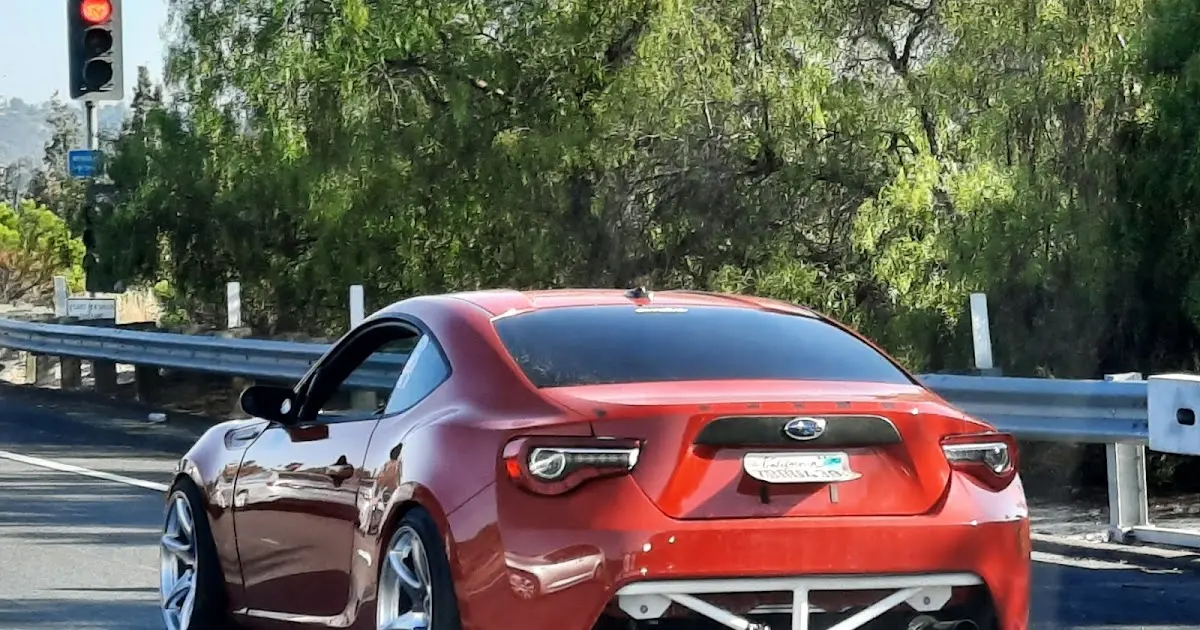A bent license plate means it has been physically damaged or altered. This might happen accidentally, like in a minor collision or by bumping into something. Sometimes, people bend license plates on purpose to avoid traffic cameras or parking tickets. Generally, what a bent license plate means can vary from harmless damage to intentional misuse.
A bent license plate might seem like a minor issue, often caused by a bump or parking mishap. However, what does a bent license plate mean something different when it partially hides numbers. In some cases, it’s an attempt to avoid detection by cameras or law enforcement. Knowing the reasons behind a bent license plate can reveal whether it’s accidental or intentional.
Accidental Damage: The Most Common Reason

In many cases, a bent license plate is simply the result of accidental damage. Common causes of unintentional bending include:
- Minor Collisions: Even a minor fender-bender or low-speed accident can bend a license plate if it’s positioned in a vulnerable spot on the bumper.
- Backing Into Objects: Bumping into a pole, wall, or another object while parking can easily bend the license plate, especially if it’s mounted on the front or back bumper.
- Weather and Environmental Conditions: Hail, strong winds, or contact with debris on the road can cause slight damage, which over time may lead to a bent plate.
- Improper Handling: When handling, washing, or maintaining the vehicle, it’s easy to accidentally bend the plate if care is not taken, especially with lighter materials.
Although a Bent License Plate Illegal from accidental damage is typically harmless, it’s still a good idea to straighten it out, as continued bending can lead to cracks, rust, or even the need for a replacement.
Intentional Bending for Aesthetic or Practical Reasons
Some drivers intentionally bend their license plates, often for aesthetic purposes or to fit customized vehicles:
- Custom Vehicle Builds: Modified or custom vehicles might require bending the license plate to fit certain design aesthetics or for practical placement on the car’s body.
- Bike Racks and Accessories: Bending the plate slightly can sometimes accommodate bike racks, spare tires, or other accessories that obstruct the view of the plate.
However, if a license plate is bent in a way that obscures numbers, letters, or any registration details, it may violate local laws. Drivers who intentionally bend plates mean for aesthetic or practical purposes should make sure they comply with legal requirements to avoid fines or penalties.
Potentially Suspicious Behavior
A bent license plate can sometimes suggest potentially suspicious behavior, especially if it appears intentionally altered. Drivers may bend their license plates to evade traffic cameras or conceal the plate number, making it harder for law enforcement to identify the vehicle.
This tactic might be used to avoid fines from speeding or red-light cameras or to evade parking enforcement in ticket-heavy areas. In some cases, criminals may even bend a plate to disguise a stolen vehicle. Ultimately, a bent license plate mean in these contexts is often an attempt to obscure a vehicle’s identity and avoid detection.
- Evading Traffic Cameras: Some drivers may bend their plates to reduce the visibility of the numbers, making it harder for traffic cameras to capture an image if they run a red light or exceed the speed limit.
- Avoiding Parking Tickets: In areas with high ticketing rates, drivers might bend plates to avoid detection by parking enforcement officers.
- Concealing a Stolen Vehicle: Criminals may bend or tamper with license plates to make stolen vehicles harder to identify, both for law enforcement and the general public.
Legal Implications of Driving with a Bent License Plate

Driving with a bent or damaged license plate can sometimes result in legal issues. Local laws typically require that a license plate be clearly visible, unobstructed, and in good condition. While specific regulations vary, common legal guidelines regarding license plates include:
- Full Visibility: Most jurisdictions require that all numbers, letters, and the expiration date on the plate be fully visible from a certain distance. A bent plate that blocks part of the information can result in fines.
- Condition Requirements: Some regions require that plates be maintained in good condition. A significantly bent, rusted, or damaged plate may be grounds for a ticket.
- Potential Consequences: If law enforcement suspects that a driver has bent their plate to evade detection, this could lead to more serious fines, questioning, or even charges related to obstruction.
Fixing a Bent License Plate: DIY or Replace?
If you’ve noticed that your license plate is bent, it’s often a straightforward fix, depending on the severity of the damage:
- Simple Bends: For minor bends, you can often straighten the plate by carefully bending it back into shape by hand or with the help of pliers.
- Moderate Bends: If the bend is more severe, placing the plate between two pieces of wood and gently hammering it flat can help restore it to its original shape. Use a cloth or padding to avoid scratching the plate.
- Replacing the Plate: In cases where the plate is cracked, rusted, or heavily bent, it might be best to replace it. Most departments of motor vehicles (DMVs) or equivalent agencies offer replacement plates for a small fee.
Regular maintenance of your license plate is a small but crucial part of keeping your vehicle in good condition and avoiding any unnecessary fines.
Tips for Preventing Future License Plate Damage

To avoid recurring issues with a bent license plate, there are several preventative measures you can take:
- Install a License Plate Frame: License plate frames can offer added protection against minor bumps and scrapes.
- Be Mindful of Parking: Carefully parking in tight spaces, especially near walls or curbs, can reduce the likelihood of accidental bending.
- Check After Off-Roading: If you enjoy off-roading or driving on unpaved surfaces, it’s wise to check your plate afterward for any bends or damage.
- Regular Cleaning and Maintenance: Periodically clean your license plate and inspect it for any signs of rust, cracks, or bending, as these can worsen over time.
Conclusion
In conclusion, a bent license plate mean different things depending on the circumstances. It could simply be the result of an accident, such as bumping into an object while parking or driving. However, if the plate is intentionally bent to obscure the numbers or letters, it might indicate an attempt to avoid detection by traffic cameras or law enforcement.
This behavior can be seen as suspicious and may lead to fines or legal trouble. Regularly checking and maintaining your license plate in good condition is important to avoid both accidental damage and legal issues. Whether accidental or intentional, understanding a bent license plate mean helps drivers stay informed about the potential implications and risks associated with a damaged or altered license plate.
FAQs
What does a bent license plate mean?
A bent license plate can be a result of accidental damage or intentional modification.
Can a bent license plate lead to a fine?
Yes, if the plate is obscured or unreadable, it may result in a fine.
Why would someone intentionally bend their license plate?
To avoid detection by cameras or law enforcement, often for traffic violations.
How can I fix a bent license plate?
You can carefully straighten it by hand or with pliers, or replace it if it’s severely damaged.
Is a bent license plate illegal?
It’s illegal if it obstructs the plate’s visibility or registration details.









